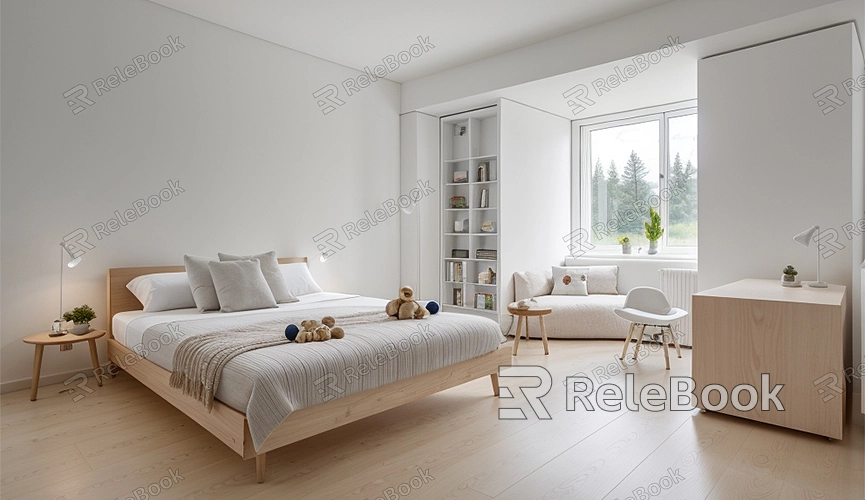How Long Will Blender Take to Render?
Blender is a powerful open-source software for 3D modeling, animation, and rendering, widely used in film, television, gaming, and advertising industries. Many beginners and professionals using Blender often wonder: How long will rendering take? This article explores various factors affecting Blender render times and provides optimization methods to improve rendering efficiency.
I. Main Factors Affecting Render Time
1. Hardware Configuration:
- CPU and GPU: Rendering speed is closely tied to the performance of your computer's processor and graphics processor. High-performance CPUs and GPUs can significantly reduce rendering time. Blender supports multi-threaded CPU rendering and GPU acceleration; it's recommended to prioritize CPUs with high core counts and powerful dedicated GPUs.

- Memory: Sufficient RAM ensures smooth rendering without memory-related slowdowns or failures. Typically, a minimum of 8GB RAM is recommended, with professionals considering 16GB or more.
2. Scene Complexity:
- Polygon Count: More polygons in models lead to longer rendering times. You can optimize render times by reducing polygon counts or using low-polygon proxy models.
- Materials and Textures: Complex materials and high-resolution textures increase rendering time. Simplifying materials and using optimized textures can effectively shorten render times.
3. Rendering Settings:
- Sampling: Blender's sampling (Samples) determines both render quality and time. Higher sample numbers improve image quality but also increase render time. It's advisable to use lower samples for preview renders and adjust to higher values for final renders as needed.
- Resolution: Higher image resolutions require longer rendering times. Choose resolutions appropriate for your project to avoid unnecessary high-resolution rendering.
II. Methods to Optimize Render Time
1. Optimize Rendering Parameters:
- Simplify Scenes: Remove unnecessary models and details, use low-polygon models, and simplify materials.
- Reduce Sampling: Maintain image quality while lowering sample counts.
- Control Resolution: Choose suitable render resolutions based on project requirements to avoid unnecessary processing.
2. Use GPU Rendering:
- Blender supports CUDA and OpenCL GPU rendering, accelerating the rendering process. Ensure GPU drivers are up-to-date and enable GPU rendering in Blender's settings.
3. Distributed Rendering:
- Utilize multiple computers for distributed rendering, significantly reducing render times. Blender supports network rendering to distribute rendering tasks across multiple machines.
4. Choose Appropriate Rendering Engines:
- Blender includes various rendering engines like Eevee and Cycles. Eevee is a real-time renderer with fast speeds, though slightly lower quality compared to Cycles. Select the rendering engine that best balances render time and quality based on project needs.
III. Practical Example
Suppose you have a complex scene to render. Follow these steps to optimize:
1. Check Models and Materials:
- Ensure models have reasonable polygon counts and efficient materials. Use Blender's Decimate Modifier to reduce polygon counts if necessary.
2. Set Rendering Parameters:
- In the "Render Properties" panel, set sample counts to moderate values like 128 or 256.
- Choose an appropriate resolution, such as 1920x1080, ensuring output quality meets requirements.
3. Enable GPU Rendering:
- In "Preferences" -> "System," select your GPU and enable CUDA or OpenCL.
- In the "Render Properties" panel, switch the rendering device to GPU Compute.
4. Preview and Final Renders:
- Perform low-sample preview renders to check overall effects.
- Once confirmed, proceed with high-sample final renders.
By employing these methods, you can significantly optimize Blender render times and enhance workflow efficiency.
Render times vary based on factors like hardware, scene complexity, and rendering settings. By optimizing these factors, you can effectively reduce render times, improving overall productivity. For high-quality 3D textures, HDRI, or 3D model downloads during your modeling and virtual scene creation, you can directly import them into Blender from Relebook.

